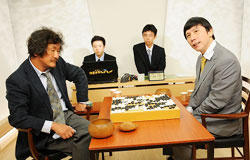I’m excited about the field called “complex systems” because it reflects of best of science’s inherent humility: everything affects everything, and we oughtn’t pretend that we know what we’re doing. I think of that as a responsible perspective, and I think it protects science from being abused (or being an abuser) in the sociopolitical sphere. So imagine my surprise to discover that the “everything affects everything” rhetoric of complex systems, ecology, and cybernetics was leveraged by tobacco companies in the 1990s to take attention away from second-hand smoke in office health investigations. Second-hand smoke wasn’t causing sickness, the hard-to-pin-down “sick building syndrome” was. For your reading pleasure, I’ve pulled a lot of text from “Sick building syndrome and the problem of uncertainty,” by Michelle Murphy. I’ve focused on Chapter 6, “Building ecologies, tobacco, and the politics of multiplicity.” Thanks to Isaac.
The meat of the chapter is pp. 146-148, and on a bit:
In the 1980s, the largest building investigation company was healthy Buildings Internations (HBI), located in Fairax, Virginia. HBI had been a modest ventilation cleaning service called ACVA Atlantic until the Tobacco Institute, an industry lobby group, contacted its president, Gray Robertson 46. Tobacco companies hoped to thwart the regulation of secondhand smoke in workspaces, restaurants, bars, and public spaces. Sick building syndrome appealed to the Tobacco Institute because it drew attention to the multiple causes of indoor pollution. Only a few cases of SBS had been attributed to tobacco smoke, a fact that Robertson, HBI, and the literature sponsored by the Tobacco Institute emphasized over and over 47. Soon the Tobacco Institute and Philip Morris were building a database together on sick building syndrome cases, collecting a literature review, and contacting sympathetic indoor air quality experts who could spread news of sick building syndrome. In 1988, five big tobacco companies found the nonprofit Center for Indoor Air Research (CIAR), which quickly became the largest nongovernmental source of funding for indoor air pollution studies.
Robertson, with a monthly retainer from the Tobacco Institute, began to underbid other companies for lucrative building investigation contracts in the Washington area–the US Capitol, the CIA headquarters, the Supreme Court, as well as corporate buildings on the East Coast such as the offices of IBM, MCI WorldCom, and Union Carbide. 49. Underwritten by Philip Morris, HBI expanded its scope by publishing a free glossy magazine that distributed over three-hundred thousand copies in multiple languages 50.
…
While Robertson was promoting sick building syndrome on the road, his company continued collecting data that later became tobacco industry evidence demonstrating that secondhand smoke —— unlike other culprits such as fungi, dust, humidity, bacteria, and formaldehyde —— was rarely a problem in buildings 54. His testimony before city councils, in court cases, and at federal hearings was pivotal to the tobacco industry’s case that secondhand smoke was not a substantive indoor pollutant and thus not in need of regulation 55.
…
the effort was so successful that the Tobacco Institute launched similar promotions of SBS in Canada, Hong Kong, and Venezuela.
Healthy Buildings International was not the only building investigation company wooed by the tobacco industry, nor was the Tobacco Institute the only industry association invested in derailing possible regulation of indoor pollution 60. The Business Council on Indoor Air, founded in 1988, represented industry sponsors such as Dow Chemical and Owens-Corning at fifteen thousand dollars for board membership. It too promoted a “building systems approach” 61. In addition, the Tobacco Industry Labor/Management Committee developed a presentation on indoor pollution for unions, creating a coast-to-coast roadshow that ran from 1988 to 1990 62. Conferences, professional associations, and particularly newsletters proliferated in which industry sponsored experts rubbed elbows with independent building investigators.
The appeal of sick building syndrome was that pollution and its effects could be materialized in a way impossible to regulate —— as an unpredictable multiplicity. “Virtually every indoor decoration, building material or piece of furniture sheds some type of gaseous or particulate pollutant,” testified Robertson 63. In its manual for building managers, the EPA warned that indoor pollution was “the product of multiple influences, and attempts to bring problems under control do not always produce the expected results” 64. Managing complex relationships among many “factors” and “symptoms” replaced a “naive,” “single-minded,” and even “dangerous” attention to specific pollutants.
and last,
The implication is that multiplicity was not a quality that could be simply celebrated for its eschewing of reductionism and embracing of diversity. Materializing an object as a multiplicity allowed historical actors to do concrete things about chemical exposure; at the same time, it disallowed and excluded other actions. It was precisely this capacity to exclude specific causal narratives and affirm ambiguity that made ecology and multiplicity such powerful ways to manage the physical corridors of capitalism. p.150
All this comes with interpretation. Murphy takes ecology and cybernetics to be fundamentally “establishment.” She documents the affection of management rhetoric for ecological and cybernetic concepts, but she goes further, citing Eugene Odum’s declaration of ecosystems ecology as “a new managerial ethos for society” (p.134). Then she moves into buildings, the business of buildings, the rhetoric of buildings as living things, wrapping up with research on the idea of questionnaires.
Throughout the book the author rocks a latent hostility to these concepts and also to criticisms of them. The author pulls the same trick with sick building syndrome itself: criticizing the establishment for not recognizing it as a disease, but also criticizing the people who suffer from it because they are too privileged to have actual problems. I guess that’s why they call it critical theory, but I can’t help but feel like critical theorists do it as a hyperdefensive maneuver to avoid being vulnerable in front of their own peers. So I did find myself reading past her writing for the content, but there is a lot of that. She collected a ton of evidence, and its an impressive case in showing that everything has got politics.
Here are all of the citations, copied straight out of the footnotes.
46 Myron Levin, “Who’s Behind the Building Doctor?”; Mintz, “Smoke Screen.”
47. Using its own building investigations as the data, HBI often cited its estimate that tobacco smoke played a role in 3% of SBS cases. However, this obscures incidents when tobacco smoke might have been named as an irritant unassociated with any larger SBS episode.
48. The CIAR was disbanded in 1998 as part of the Master Settlement Agreement.
49. On the sponsorship of Robertson, see Mintz, “Smoke Screen.” For a list of buildings the firm investigated, see References, Healthy Buildings Internationsl, Web site, http://www.hbiamerica.com/references/index.htm (accessed Nov. 19, 2003).
50 Myron Levin, “Who’s Behind the Building Doctor?”; Mintz, “Smoke Screen.”
51. Healthy Buildings International, “Sick Building Syndrome Causes and Cures,” 1991. Legacy Tobacco Documents Library, Philip Morris Collection, Bates No. 2022889303-9324, http://legacy.library.ucsf.edu/tid/hpc78e00 (accessed Nov. 27, 2003).
52. “Business Council on Indoor Air: A Multi-industry Response,” 6.
53. Gra Roberston, Healthy Buidings International, Sick Building Syndrome—Facts and Fallacies, Obt. 23, 1991, Legacy Tobacco Documents Library, R. J. Reynolds, Bates No. 509915547-5568, http://legacy.library.ucsf.edu/tid/qbr63d00. Recent Advances in Tobacco Science, v. 17. Topics of Current Scientific Interest in Tobacco Research, Proceedings of a Symposium Presented at the Forty-Fifth Meeting of the Tobacco Chemists’ Research Conference (accessed Nov. 27, 2003): 151-52.
54. Healthy Buildings International, “HBI Experience.”
55. HBI’s relationship with the tobacco industry was revealed in 1992 when a fired employee turn whistle-blower. By 1998 the Master Settlement Agreement, a settlement between the U.S. state attorneys general and major tobacco companies, along with the Tobacco Institute, mandated that the industry release digital snapshots of millions of pages of internal documents, which have since demonstrated the industry’s support of indoor air s quality research and investigators, establishing ties not only with Rboertson but a host of other indoor air quality specialists.
56. U.s> Environemtnal Prote tionAgentcy, “Indoor Air Facts.” Much of the credit for the successful publication of this pamphlet is due to James Repace, a senior EPA scientist, whistle-cloer, and active NFEE union member, who widely published his rebuttals to the tobacco industry. On the EPA’s building assessment approach, see U.S. Envionmental Protection Agency and National Instutute of Occupational Safety and Health, “Building Air Quality.”
57. Healthy Buildings International, “About Us,” http://www.hbiamerica.com/aboutus/index.htm (accessed Nov. 11, 2003).
58. Ibid.
59. Gray Robertson, “Sick Building Syndrome,” Nov. 18, 1987. Legacy Tobacco Documents Library, Philip Morris Collection, Bates No. 2061692010-2012, http://legacy.library.ucsf.edu/tid/pjf49e00 (accessed Nov. 27, 2003).
60. See, e.g., the role of tobacco industry representatives within ASHRAE; Glantz and Bialous, “ASHRAE Standard 62.”
61. Business Council on Indoor Air, “Indoor Air Quality: A Public Healthy Issue in the 1990s; How Will It Affect Your Company?,” undated brochure, received on April 11, 1996, and “Building Systems Approach.”
62. “Labor Indoor Air Quality Presentations and Events,” Jan 1990, Legacy Tobacco Documents Library, Tobacco Institute, Bates No. TI02120328-0338, http://legacy.library.ucsf.edu/tid/wht30c00 (accessed Nov. 23, 2003).
63. “Investigating the ‘Sick Building Syndrome’:ETS in Context,” statement of Gray Robertson, president, ACVA Atlantic, Inc., before the National Academy of Sciences Concerning the Contribution of Environmental Tobacco Smoke to Indoor Air Pollution, Jan. 14, 1986, Legacy Tobacco Documents Library, Philip Morris Collection, Bates No. 2021005103-5125, http://legacy.library.ucsf.edu/tid/epj34e00 (accessed Nov. 27, 2003) 7.
64. U.S. Environmental Protection Agency and National Institute of Occupational Safety and Health, “Building Air Quality,” x.
65. Robertson, “Investigating the ‘Sick Building Syndrome’,” 21.
And, as an extra snippet, Here is an excerpt bringing ecology in:
… moreover, the healthfulness of buildings was of deep interest to a selection of industries and their associations, most particularly the chemical, carpet, and tobacco industries. Ecology proved a very useful frame to this set of financially driven actors, each of which brought distinct motivation to the materialization of sick building syndrome. Ecology gave a framework for affirming the nonspecific and multiplous quality of sick building syndrome that was especially appealing to the tobacco industry, which actively resisted regulation. This chapter concludes that the concept of sick building syndrome achieved the prominence it did in the last two decades of the twentieth century largely because of the tobacco industry’s efforts to promote an ecological and systems approach to indoor pollution
Sick building syndrome would have looked very different without the cybernetically inflected ecology of the 1970s. ‘Ecology’ was a word used to describe both a field of study (the scientific discipline of ecology) and an object of study (ecologies that existed in the world). Systems ecology took as its primary focus the study of the abstract patterns of relations between the organic and inorganic elements of a system. An emphasis on the management of the system, on the regulation of its flows, relationships, and second-order consequences, made systems ecology enormously attractive as a management ideology for business. This chapter traces how ecology was used to grant a complex, fluid, and multi causal form to business practices, building systems, and finally to sick building syndrome itself. The foregrounding of relationships defined by contingencies made ecological explanations extremely useful for assembling accounts that did not lay blame for indoor pollution on any one thing. p. 132
 Was this a failure of information diffusion in a distributed local-information system? Or was it a failure of a properly informed top-down system suppressing the right information and amplifying the wrong information? We don’t know, we don’t really have the language to articulate that question in a manner that it can be answered. In that respect this is not just a failure of a complex system, but a failure of complex systems, the field.
Was this a failure of information diffusion in a distributed local-information system? Or was it a failure of a properly informed top-down system suppressing the right information and amplifying the wrong information? We don’t know, we don’t really have the language to articulate that question in a manner that it can be answered. In that respect this is not just a failure of a complex system, but a failure of complex systems, the field.





